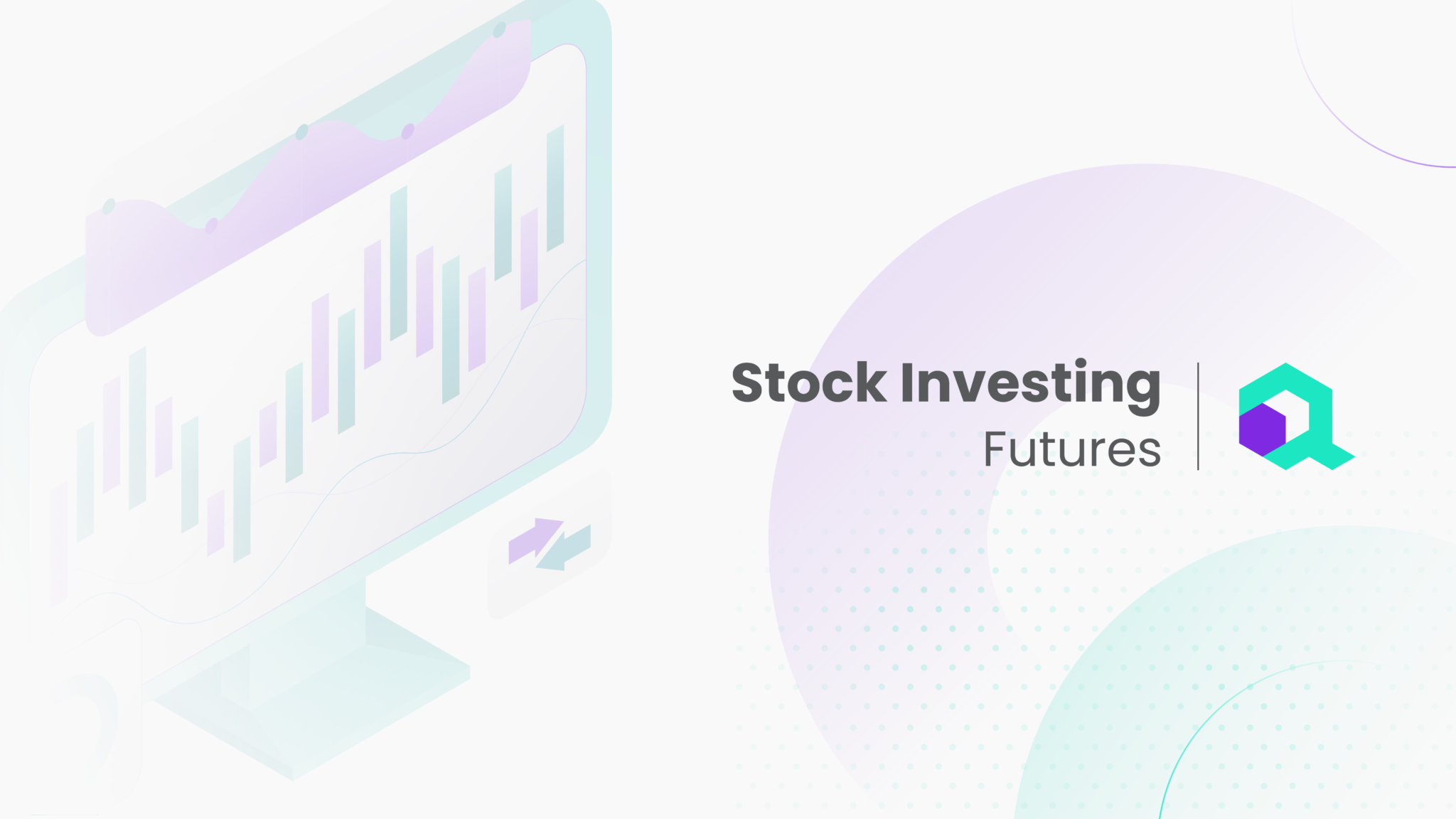
Investing in stock futures can be a gateway to achieving your financial goals, offering both the potential for substantial rewards and the risk of significant losses. This form of investment allows individuals to speculate on the future price of stocks, making it a critical aspect of financial planning for those looking to secure their financial future. However, navigating the complexities of the stock market requires more than just a basic understanding of how trades are made. It demands a strategic approach, one that balances risk with potential returns, to ensure long-term success.
The essence of stock investing futures lies in its ability to provide investors with leverage, enabling them to control large amounts of stock with a relatively small investment. This leverage can magnify gains but also exacerbate losses, making it crucial for investors to approach the market with a well-thought-out strategy. By focusing on long-term growth, rather than short-term fluctuations, investors can mitigate some of the inherent risks associated with stock futures.
Developing a successful strategy for investing in stock futures involves a deep dive into market trends, understanding the factors that influence stock prices, and making informed predictions about future movements. It also requires a robust risk management framework to protect against unforeseen market downturns. This article aims to explore the strategies that can help individuals achieve long-term success in stock investing futures, emphasizing the importance of education, diversification, and a disciplined approach.
What is Stock Investing Futures?

Understanding stock investing futures extends into the realm of derivative trading, where futures contracts play a significant role. These contracts are legal agreements to buy or sell a particular commodity or financial instrument at a predetermined price at a specified time in the future. Unlike direct stock investments, where the focus is on buying shares of companies in the hope that their value will increase over time, futures trading involves speculating on the future price of stocks or stock indices.
One critical aspect of futures trading in the stock market is the leverage involved. Because futures contracts are typically bought and sold on margin, investors can control large amounts of stock or indices with a relatively small amount of capital. This leverage can amplify gains but also increases the risk of significant losses, making it essential for investors to have a risk management strategy in place.
Also Read: What is Cap Rate? Definition and The Factors Influencing
Economic indicators such as GDP growth rates, unemployment rates, and inflation data are vital in forecasting market trends, as they directly impact investor sentiment and stock prices. Similarly, company performance metrics like earnings reports, revenue growth, and debt levels are crucial in evaluating the potential future performance of stocks. Global events, including geopolitical tensions, trade agreements, or pandemics, can also dramatically affect market dynamics, influencing the direction of stock prices and futures markets.
For investors in stock investing futures, staying informed through continuous education and market research is crucial. This involves not only keeping up with the latest economic indicators and company performance metrics but also understanding how these factors interrelate and impact the broader market. Moreover, investors must develop a keen sense of market sentiment, which often drives short-term market movements and can be as important as fundamental analysis in futures trading.
Investing in stock futures requires a comprehensive understanding of market dynamics, a solid grasp of economic and company-specific factors, and an awareness of global events. Successful investors in this field are those who commit to continuous learning, stay updated with the latest market trends, and develop robust risk management strategies to navigate the complexities of futures trading.
The Importance of a Diversified Portfolio

Diversification stands as a pivotal principle in the realm of investment, particularly when navigating the uncertain terrains of stock futures. This strategy underscores the importance of allocating investments across a broad spectrum of sectors, geographic locations, and asset types. The rationale behind such a diversified portfolio is to mitigate the impact of potential losses from any single investment. While the stock market is inherently volatile, characterized by rapid and unpredictable fluctuations, diversification aims to buffer investors against the extremes of this volatility.
The essence of diversification is rooted in the adage, “Don’t put all your eggs in one basket.” In the context of investment, this means spreading out exposure to risk by investing in a variety of assets. Different sectors and geographic regions often react differently to the same economic events. For example, while one industry may suffer due to specific geopolitical tensions, another may thrive. Similarly, market conditions in one country might be deteriorating, while in another, they could be improving. By diversifying their portfolio, investors can potentially offset losses in one area with gains in another.
Moreover, diversification extends beyond just stocks and bonds. It includes a range of asset classes such as real estate, commodities, and even alternative investments like cryptocurrencies and private equity. Each asset class has its own set of risk and return characteristics, and they do not always move in tandem. By including different asset classes in a portfolio, investors can further reduce the risk of significant losses, as the poor performance of one asset class may be balanced by stronger performance in another.
However, it’s crucial to understand that diversification does not eliminate risk entirely. It is a strategy aimed at reducing the impact of volatility and minimizing the risk of substantial losses. It cannot guarantee profits or shield investors from all forms of loss. Market conditions, economic factors, and unexpected global events can still affect the overall performance of a diversified portfolio. Nonetheless, by adopting a diversified investment approach, investors can aim for more stable and predictable returns over the long term, making it a fundamental strategy for anyone looking to build and preserve wealth through investing.
Developing a Disciplined Investment Approach

Developing a disciplined investment approach, especially in the context of stock futures, is crucial for navigating the complexities and volatilities of financial markets. The essence of discipline in investment lies in the ability to adhere strictly to a predefined strategy or set of rules designed to guide trading decisions, which is particularly challenging in the face of market fluctuations that can evoke strong emotional responses.
Key Components of a Disciplined Investment Approach
- Setting Clear Goals: Before embarking on trading stock futures, investors should clearly define their investment objectives. These goals can range from achieving a certain rate of return, preserving capital, or generating income. Clear goals provide a framework for making investment decisions and measuring progress.
- Risk Management: Understanding and managing risk is a cornerstone of disciplined investing. This involves setting stop-loss orders, determining the size of positions relative to the overall portfolio, and diversifying investments to mitigate losses.
- Developing a Trading Plan: A comprehensive trading plan outlines the criteria for entering and exiting trades, including technical indicators, market conditions, and time frames. This plan acts as a roadmap for making objective decisions, helping investors to avoid impulsive actions based on market noise.
- Emotional Control: The ability to control one’s emotions is critical in avoiding decisions based on fear or greed. Emotional control helps investors stick to their trading plan and make rational decisions, even during market downturns or unexpected events.
- Continuous Learning and Adaptation: The financial markets are dynamic, and a disciplined investor must be willing to learn from experiences and adapt strategies as necessary. This includes staying informed about market trends, economic indicators, and changes in regulations that could impact stock futures.
- Patience: Patience allows investors to wait for the right trading opportunities that align with their strategy, rather than chasing performance or reacting to short-term market movements.
- Regular Review and Adjustment: A disciplined approach also involves regularly reviewing and adjusting the investment strategy to ensure it remains aligned with one’s goals and the current market environment. This may include rebalancing the portfolio, reassessing risk tolerance, or refining the trading plan based on past performance and future expectations.
Implementing the Approach
Implementing a disciplined investment approach requires consistency and commitment. It often means making difficult decisions, such as cutting losses or taking profits when necessary, even if it goes against prevailing market sentiment. Tools and technologies, such as automated trading systems, can assist in maintaining discipline by executing trades based on predefined criteria, thus removing emotional bias from the decision-making process.
A disciplined investment approach is essential for success in the volatile world of stock futures. By setting clear goals, managing risk, developing and sticking to a trading plan, controlling emotions, continuously learning, exercising patience, and regularly reviewing strategies, investors can navigate market uncertainties more effectively. While discipline does not guarantee success, it significantly increases the chances of achieving long-term investment objectives.
Leveraging Technology for Market Analysis

Leveraging technology for market analysis has become indispensable in the realm of stock investing. In today’s fast-paced financial markets, the ability to quickly analyze vast amounts of data and execute trades at optimal times can be the difference between profit and loss. Technological advancements have led to the development of sophisticated tools and platforms that cater to the diverse needs of investors, ranging from novices to professionals.
Advanced Charting Software
Advanced charting software offers a plethora of features that enable investors to visualize market data in a comprehensive and intuitive manner. These tools provide access to real-time market data, historical price charts, technical indicators, and analytical tools that can help in identifying market trends and potential investment opportunities. With the help of these software solutions, investors can perform detailed technical analysis to forecast future price movements and make informed investment decisions.
Algorithmic Trading Platforms
Algorithmic trading platforms have revolutionized the way trades are executed in the financial markets. By using algorithms to execute trades based on predefined criteria, such as timing, price, and volume, these platforms can carry out transactions at speeds and accuracies that are beyond human capabilities. This not only increases efficiency but also helps in minimizing the impact of human emotions on trading decisions. Algorithmic trading can be particularly beneficial in exploiting short-term market inefficiencies and managing large volumes of trades.
Portfolio Management Tools
Portfolio management tools are essential for investors looking to manage their investments effectively. These tools offer functionalities for tracking portfolio performance, assessing risk, and allocating assets in alignment with the investor’s financial goals and risk tolerance. They can also provide insights into portfolio diversification and help investors in making adjustments to their investment strategies based on market conditions.
Access to Global Markets
Technology has also made it easier for investors to access global financial markets. Through online trading platforms, investors can trade a wide range of financial instruments across different markets from a single account. This global access not only opens up new investment opportunities but also allows for portfolio diversification across different asset classes and geographical locations.
Artificial Intelligence and Machine Learning
The integration of artificial intelligence (AI) and machine learning (ML) in market analysis tools has further enhanced the capabilities of investors to predict market trends and identify investment opportunities. AI and ML algorithms can analyze large datasets, recognize patterns, and make predictions with high accuracy. These technologies are increasingly being used to develop predictive models for stock price movements, economic forecasting, and risk management.
Embracing technology in market analysis offers a multitude of benefits to investors, including enhanced analytical capabilities, improved efficiency in trade execution, and better portfolio management. As technological advancements continue to evolve, investors who leverage these tools effectively will likely find themselves at a competitive advantage, equipped to navigate the complexities of the financial markets with greater confidence and success.
The Role of Risk Management in Stock Futures

In the context of stock futures, risk management plays a pivotal role in safeguarding investors’ portfolios from the volatility and uncertainties inherent in these financial instruments. Stock futures are contracts to buy or sell a specific stock at a predetermined price on a specified future date, making them highly sensitive to market dynamics and sentiment. This sensitivity underscores the importance of a robust risk management strategy.
Identification of Risks
The first step in risk management is identifying the potential risks that could affect the investment. In the case of stock futures, these risks include market risk, where the overall market moves against the position; liquidity risk, which arises when it becomes difficult to exit a position without affecting the price significantly; and leverage risk, given that futures often involve a high degree of leverage, amplifying both gains and losses.
Assessment of Impact
After identifying the risks, assessing their potential impact on the investment is crucial. This involves analyzing how changes in market conditions, interest rates, and the overall economy could affect the futures contracts. By understanding the possible outcomes, investors can better prepare for adverse market movements.
Also Read: What is Black Market? Challenges and Solutions
Implementation of Mitigation Strategies
To mitigate these identified risks, investors employ various strategies. Setting stop-loss orders is a common technique, where an order is placed to sell a security when it reaches a certain price, thus limiting potential losses. Using options for hedging involves buying options contracts to offset potential losses in the futures contracts, providing a form of insurance against market downturns. Additionally, the principle of only investing money that one can afford to lose ensures that investors do not overextend themselves financially, protecting their livelihood and ensuring they can weather losses without devastating consequences.
Long-term Market Participation
Effective risk management is not just about protecting against losses; it’s also about ensuring longevity in the market. By carefully managing risk, investors can avoid the pitfalls that often eject participants from the market during turbulent times. This long-term perspective is essential for success in stock futures trading, as it allows investors to capitalize on opportunities and learn from the market’s ups and downs.
Risk management in stock futures is a comprehensive approach that encompasses identification, assessment, and mitigation of potential risks. By implementing effective risk management strategies, investors can protect their capital, navigate the complexities of the futures market, and increase their chances of long-term success. This disciplined approach is essential for anyone looking to venture into the volatile world of stock futures trading.
Conclusion
Investing in stock futures offers a path to financial growth and security, but it requires a strategic and disciplined approach. Education, diversification, and the effective use of technology are key components of a successful investment strategy. By understanding the market, spreading out investments, and leveraging the latest tools, investors can navigate the complexities of stock futures with greater confidence and control.
Moreover, adopting a disciplined investment approach and prioritizing risk management can help investors avoid the pitfalls of emotional decision-making and protect their portfolios from severe downturns. The journey to long-term success in stock investing futures is not without its challenges, but with the right strategies in place, it is certainly achievable.
In conclusion, the world of stock investing futures is dynamic and complex, but it holds significant potential for those willing to approach it with patience, discipline, and a commitment to continuous learning. By embracing the strategies outlined in this article, investors can position themselves for long-term success, turning the volatility of the stock market into a powerful ally in their quest for financial security and growth.
Disclaimer: The information provided by Quant Matter in this article is intended for general informational purposes and does not reflect the company’s opinion. It is not intended as investment advice or a recommendation. Readers are strongly advised to conduct their own thorough research and consult with a qualified financial advisor before making any financial decisions.
I'm Carina, a passionate crypto trader, analyst, and enthusiast. With years of experience in the thrilling world of cryptocurrency, I have dedicated my time to understanding the complexities and trends of this ever-evolving industry.
Through my expertise, I strive to empower individuals with the knowledge and tools they need to navigate the exciting realm of digital assets. Whether you're a seasoned investor or a curious beginner, I'm here to share valuable insights, practical tips, and comprehensive analyses to help you make informed decisions in the crypto space.
-
Carinahttps://quantmatter.com/author/carina/
-
Carinahttps://quantmatter.com/author/carina/
-
Carinahttps://quantmatter.com/author/carina/
-
Carinahttps://quantmatter.com/author/carina/

